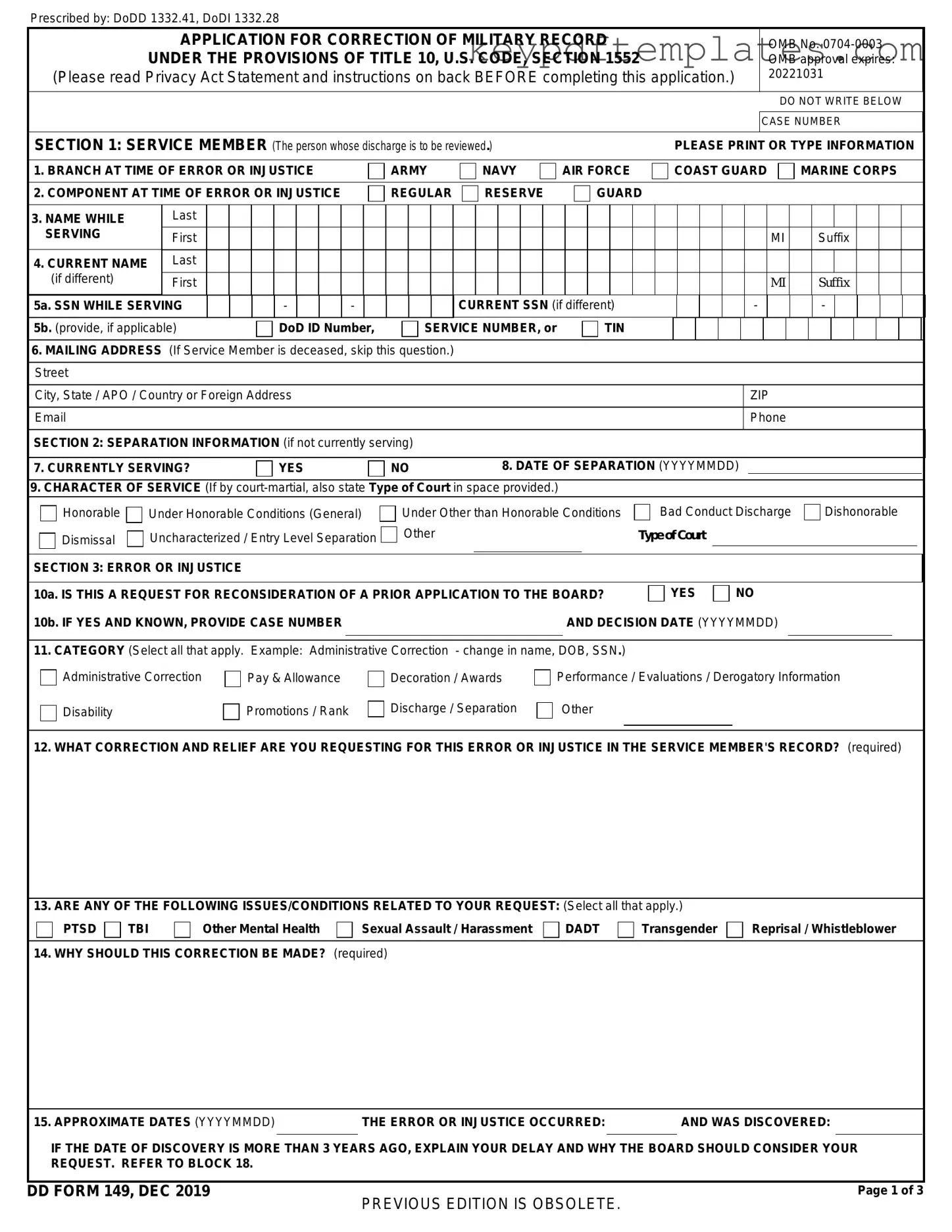Get DD 149 Form
The DD 149 form is a request for correction of military records, commonly used by veterans and service members to address errors or discrepancies in their official documentation. This form provides a formal avenue to seek changes that can impact benefits, entitlements, and personal records. Understanding how to properly complete and submit the DD 149 is crucial for ensuring that your military history is accurately represented.
Modify Document Online
